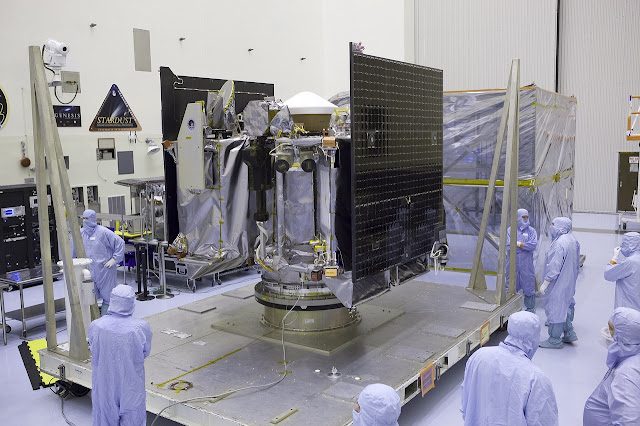NASA has come up with a new mission
who the organization has named as SunRISE (Sun Radio Interferometer
Space Experiment) with an aim to do extensive research and study
the solar storms on the Sun. The sole purpose to be is able to reach
to a point where it would be able to predict the solar storms which
would be used to shield astronauts and space equipment on space
trips of long durations to Mars or the Moon.
The latest mission from the National
Aeronautics and Space Administration is built up with six CubeSats
which would function as a large single radio telescope. With a deadline set to July 1, 2023, NASA has put in an investment of
whopping a total of 62.6 million dollars for the design, built and launch
of this SunRISE mission. This SunRISE mission is led by Justin Kasper
at the University of Michigan in Ann Arbor and is being managed by
NASA’s Jet Propulsion Laboratory in the Pasadena region in
California.
Scientists at NASA have designed the
mission to study and gain more information on how the sun generates
solar storms and gives out huge space weather storms which are
scientifically termed as solar particle storms. SunRISE will also be
aiming to gain important insights about how the solar system
functions. Getting more additional information on this would help
NASA and the other space organizations to know more about how to
protect the astronauts traveling to the planets near to the Sun-like Mars and also the Moon.
NASA came up with this project in
the month of August in 2017. This mission which totals up to a period
of eleven months would be heavily relying upon the six CubeSats
powered by solar energy and believe it or not, each of these CubeSat
is similar to the size of a normal daily toaster oven that would be
operating together in sync to observe the radio images of low
frequency emissions from the Sun and share them over the Deep Space A network of NASA. This total assemblage of the six CubeSats would be
hovering at approximately six miles of each other over the Earth’s
atmosphere because otherwise, the incoming radio signals would be
obstructed that the SunRISE mission wants to detect. The CubeSats
would be attached by a Payload Orbital Delivery System (PODS) which
will be helping to put it in a geosynchronous earth orbit (GEO).
The six CubeSats would be
generating three-dimensional maps of the radio signals that would be
focusing the points were the huge particles bursts are arising on the
sun and how they develop as they expand into space. This
information is the first of its kind to ever been undertaken and
would be highly significant to help understand and determine what
starts and helps in the acceleration of these huge radiation waves of
radiation. The mission spacecraft would also be working in unison to
map out the magnetic field lines that are expanding out in the
interplanetary space from the solar surface of the Sun. Furthermore, it
is also said to be studying on a part of the spectrum of the Sun that
is not easily traced or visible from the Earth. This would be highly
anticipated mission post the failures of the other solar probes like
the ground-based Daniel K. Inouye Solar Telescope and the Parker
Solar Probe and the Solar Orbiter.
The SunRISE mission is one of the
Missions of Opportunity from NASA, which is a part of its Explorers The program that is designed with the goal to increase and maximize on
the interplanetary and scientific knowledge gained by the new and
relatively cheaper mission via the rocket launches which are already
commissioned and are already in line to go to space. The
Explorers Program is one of the oldest programs of NASA that was
built to provide low-cost space science investigations. SunRISE, for
instance is scheduled on rideshare via a rocket that will also be
carrying a commercial satellite from the Maxar of Westminster in
Colo. Once the host spacecraft the Earth’s atmosphere and reaches
the space it will deploy all the six CubeSats before continuing on
its own mission.



Comments
Post a Comment